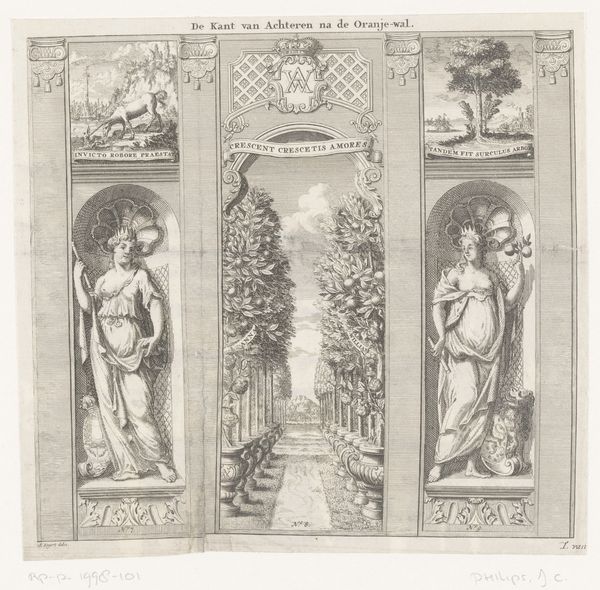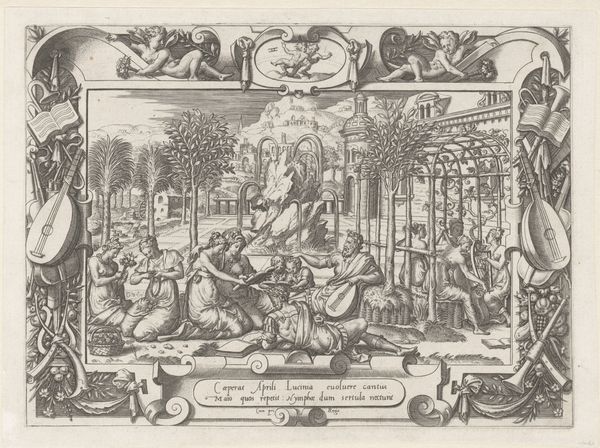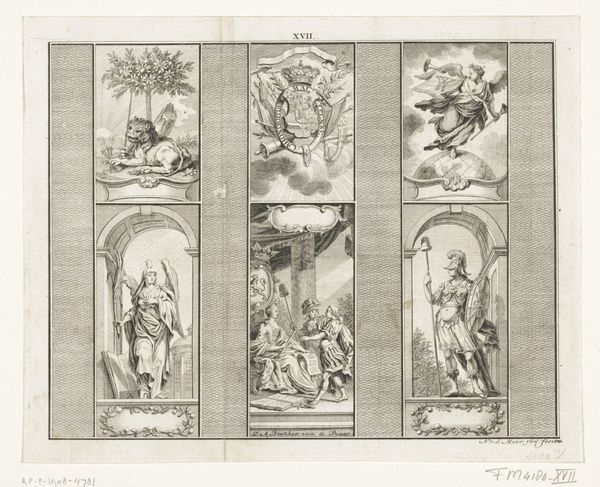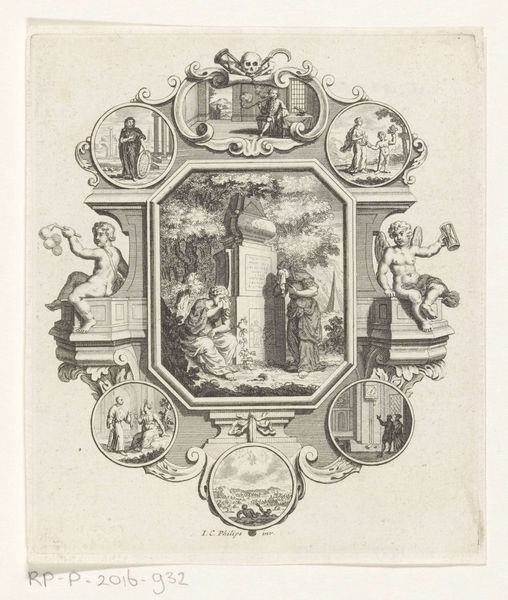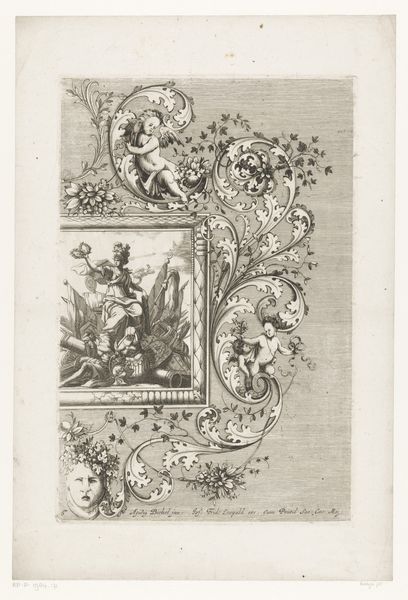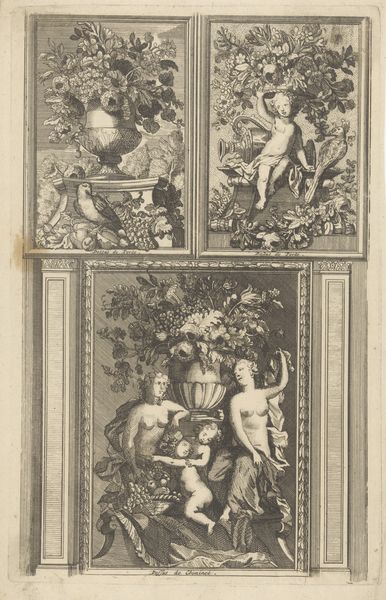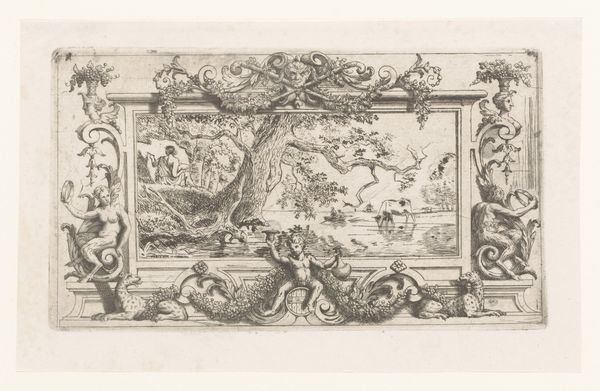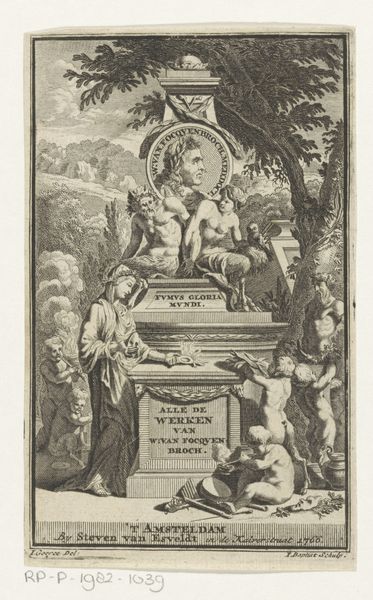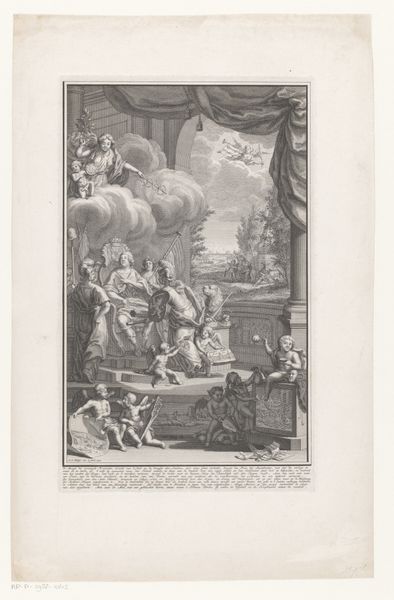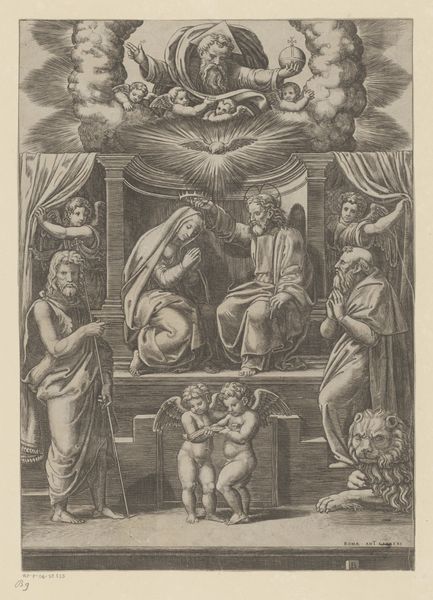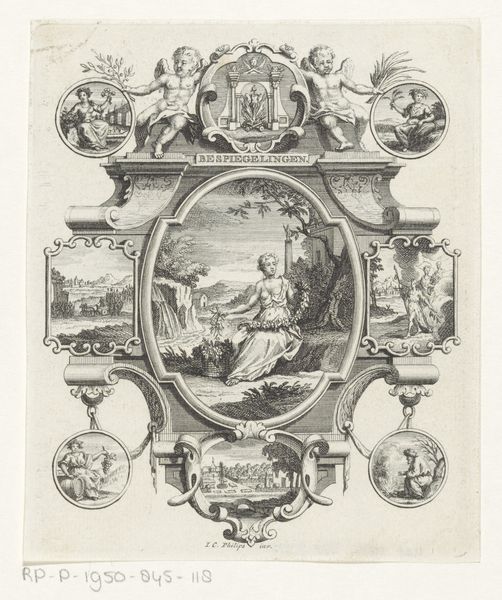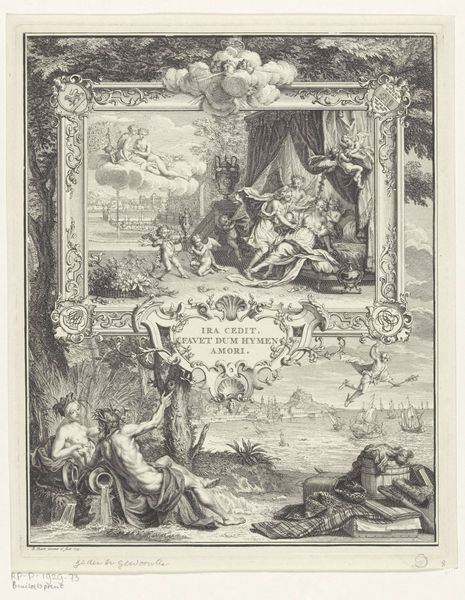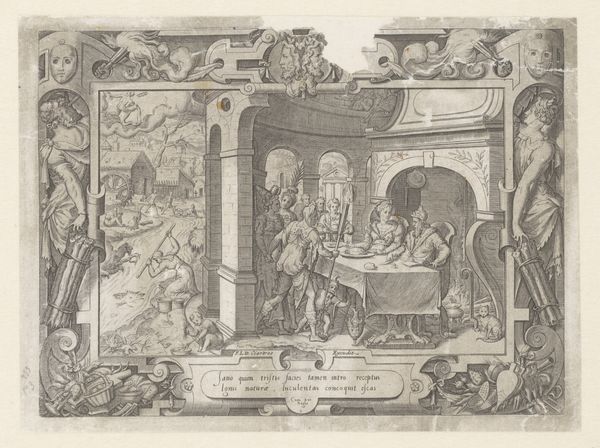
Personificaties van de Vrijheid en Friesland en Hercules verdrijft Hydra uit een tuin before 1734
0:00
0:00
engraving
#
allegory
#
baroque
#
old engraving style
#
figuration
#
history-painting
#
engraving
Dimensions: height 191 mm, width 253 mm
Copyright: Rijks Museum: Open Domain
This engraving, made by Jan Caspar Philips in the 18th century, depicts allegorical figures intertwined with classical mythology. It’s a great example of how even seemingly straightforward prints are actually deeply embedded in processes and social context. Philips used an intaglio process, cutting lines into a metal plate, inking the surface, and then wiping it clean so that ink only remained in the recesses. The plate would then be pressed onto paper, leaving a crisp, raised impression. This method allowed for fine detail, visible in the intricate rendering of figures and landscapes. But it also demanded intense labor and skill from the engraver. In Philips’ time, printmaking was a key means of circulating ideas and images. The choice of mythological and allegorical subjects, combined with Latin inscriptions, speaks to an educated audience steeped in classical learning. Ultimately, this engraving isn't just a picture; it’s a product of specific techniques, materials, and a particular moment in history. By considering these factors, we can appreciate its full meaning, challenging the traditional hierarchy between fine art and craft.
Comments
No comments
Be the first to comment and join the conversation on the ultimate creative platform.
